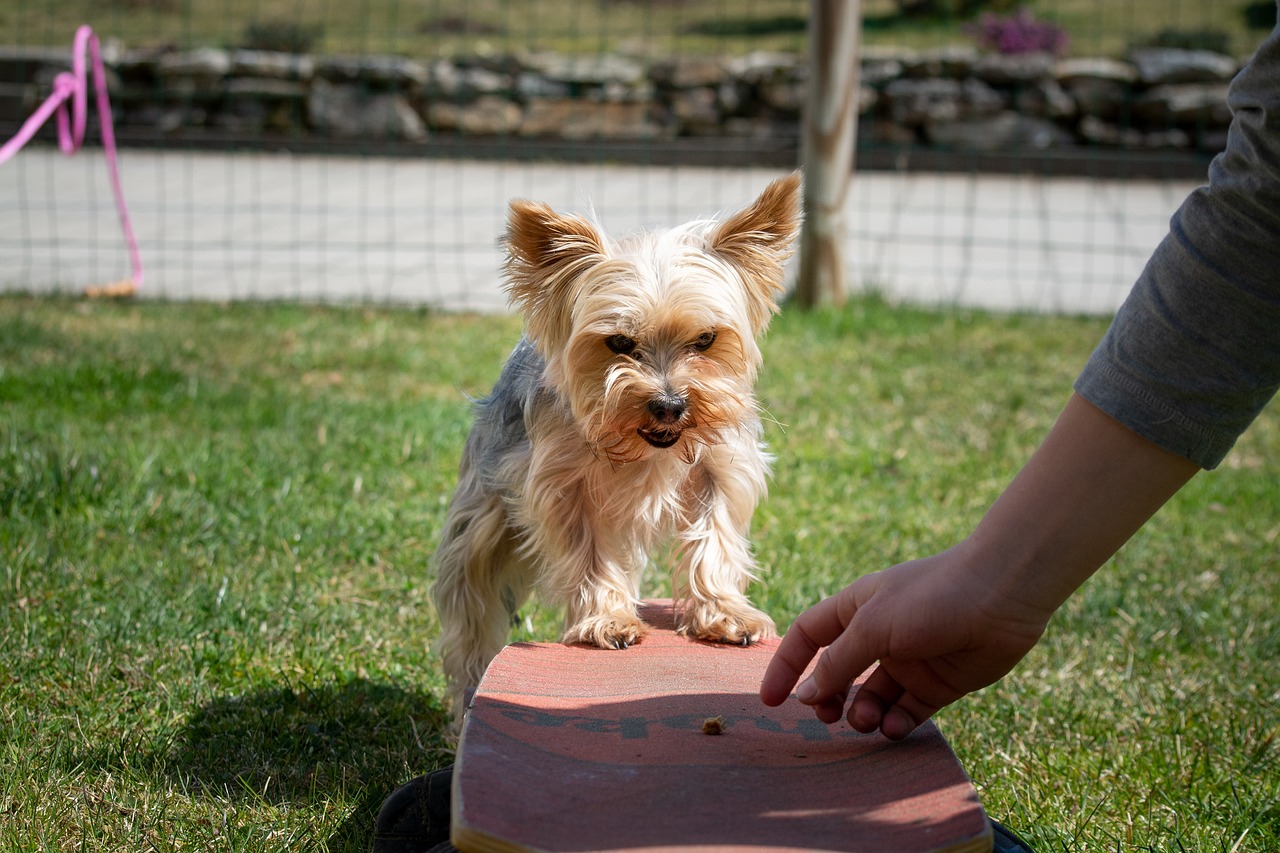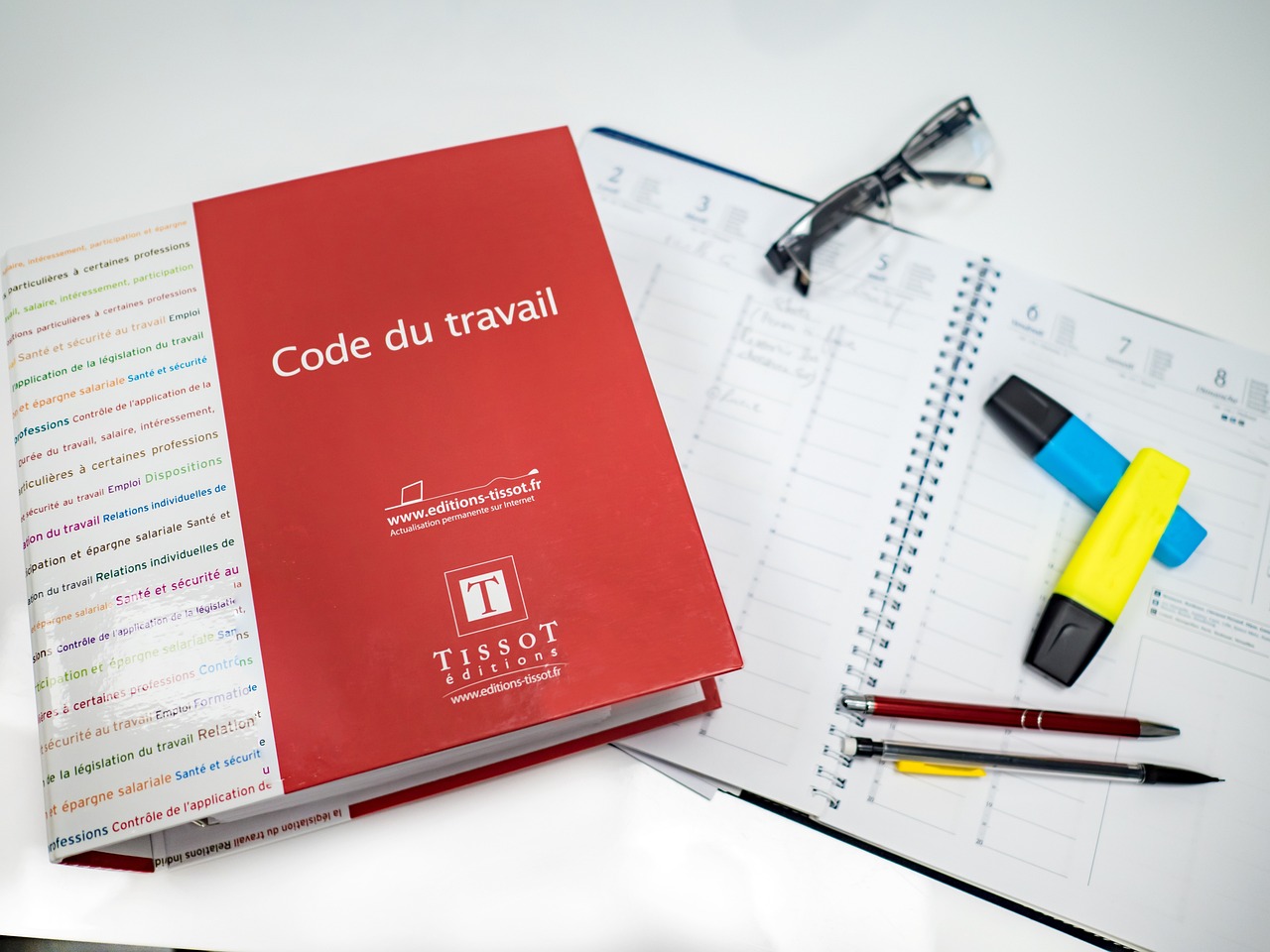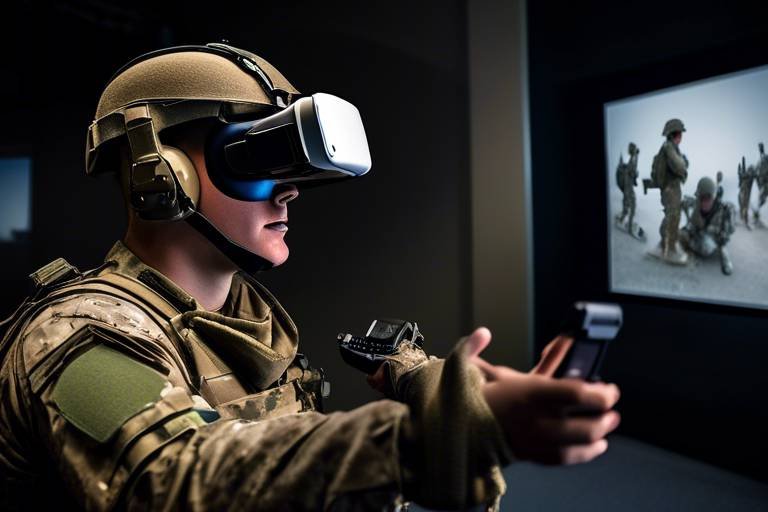The Importance of VR in Developing Adaptability in Soldiers
In today’s fast-paced military landscape, the ability to adapt is not just an asset; it’s a necessity. Imagine being in the heat of battle, where every second counts and the situation can change in the blink of an eye. This is where Virtual Reality (VR) steps in, transforming traditional training methods and enhancing soldiers' adaptability in unprecedented ways. By immersing soldiers in realistic combat scenarios, VR not only prepares them for the unpredictable nature of warfare but also builds their psychological resilience and operational effectiveness.
Consider this: soldiers often face environments that are chaotic and filled with unexpected challenges. The capacity to make quick decisions and adjust strategies on the fly can mean the difference between success and failure. VR training offers a solution by simulating high-pressure situations, allowing soldiers to practice their responses in a safe yet realistic setting. This immersive experience helps them develop a mental toolkit that they can draw upon when they encounter real-world challenges.
Moreover, VR technology goes beyond mere simulation; it creates an interactive learning environment. Soldiers can engage with their surroundings, react to various stimuli, and learn from their mistakes—all in real-time. This level of engagement not only enhances their tactical skills but also fosters a deeper understanding of teamwork and communication, both of which are crucial in military operations.
In essence, VR acts as a catalyst for adaptability, equipping soldiers with the skills they need to thrive in dynamic environments. As we delve deeper into this topic, we will explore the multifaceted role of VR in military training, focusing on its ability to simulate combat scenarios, enhance psychological resilience, and improve operational effectiveness. The future of military training is here, and it’s more immersive than ever.

Understanding Adaptability in Military Context
Adaptability is more than just a buzzword in the military; it's a critical skill that can mean the difference between success and failure in unpredictable scenarios. Imagine a soldier in the heat of battle, where every second counts and conditions can change in the blink of an eye. In these moments, the ability to quickly adjust strategies and make informed decisions is paramount. So, what exactly does adaptability entail in a military context?
At its core, adaptability involves flexibility, quick thinking, and resilience. Soldiers must be prepared to face a range of challenges, from unexpected enemy tactics to sudden environmental changes. The military environment is inherently chaotic, and those who can pivot swiftly and effectively are often the ones who thrive. This need for adaptability is not just about individual performance; it extends to teams and units as a whole. A well-coordinated unit that can adapt together will outperform one that struggles to adjust.
Consider the following aspects that highlight the significance of adaptability in military operations:
- Quick Decision-Making: In high-pressure situations, soldiers must assess threats and make rapid decisions. The ability to adapt can lead to better outcomes in these critical moments.
- Flexibility in Strategy: Plans can quickly become obsolete due to unforeseen circumstances. Soldiers need to be capable of modifying their approaches on the fly.
- Psychological Resilience: The mental fortitude to adapt to stressors is essential for maintaining focus and effectiveness in the field.
In summary, adaptability is not just a trait; it’s a fundamental requirement for military personnel. The dynamic nature of warfare demands that soldiers be prepared for anything, and those who can embrace change and uncertainty will ultimately lead the way in achieving mission success. As we delve deeper into how Virtual Reality (VR) can enhance this critical skill, it becomes clear that technology is playing a pivotal role in preparing soldiers for the challenges they will face.

The Role of VR in Military Training
Virtual Reality (VR) technology is revolutionizing the way soldiers are trained, offering immersive experiences that mimic real combat situations. Imagine stepping into a digital world where you can face the chaos of battle without the real-world risks. This is exactly what VR provides—a safe, controlled environment where soldiers can hone their skills and prepare for the complexities of modern warfare. By utilizing VR, military training becomes not just an exercise in physical endurance but a comprehensive development of cognitive and tactical abilities.
One of the most significant advantages of VR in military training is its ability to simulate combat scenarios. These simulations can recreate various environments—from urban warfare to dense forests—allowing soldiers to practice their responses to diverse threats. For example, a soldier might find themselves in a virtual city, where they have to navigate through alleys and buildings while engaging with simulated enemies. This type of training enhances tactical skills and situational awareness, which are crucial for survival on the battlefield.
When it comes to building effective soldiers, the ability to simulate realistic combat scenarios is invaluable. VR can generate a wide array of situations, each designed to challenge the soldier's decision-making and adaptability. For instance, a soldier might encounter a sudden ambush while on a reconnaissance mission, forcing them to react quickly and strategically. These scenarios are not just about physical responses; they also require mental agility and the ability to assess risks accurately. The immersive nature of VR helps soldiers feel as if they are truly in the moment, which enhances their training experience.
Creating authentic training scenarios is key to effective military preparation. VR technology can replicate the sights and sounds of combat, making the experience as lifelike as possible. This realism is crucial because it allows soldiers to experience and react to challenges they might face in real life. For example, the sound of gunfire, the sight of explosions, and the chaos of a battlefield can all be simulated, providing soldiers with the opportunity to develop their instincts and reactions in a safe setting. The more realistic the training, the better prepared they will be when faced with actual combat situations.
Another critical aspect of VR training is the immediate feedback it provides. Unlike traditional training methods, where feedback may take time to deliver, VR allows soldiers to learn from their mistakes on the spot. After completing a simulation, soldiers can review their performance, analyze their decisions, and understand where they went wrong. This kind of assessment is invaluable for improving training outcomes. By integrating assessment tools into the VR experience, trainers can track progress over time, ensuring that soldiers are continuously developing their skills and adapting to new challenges.
In summary, the role of VR in military training is multi-faceted and transformative. It not only enhances tactical skills through realistic simulations but also fosters psychological resilience and adaptability. As soldiers engage with VR technology, they are better equipped to handle the unpredictable nature of modern warfare, making them more effective in their missions.
- How does VR training differ from traditional training methods? VR training offers immersive, realistic scenarios that traditional methods cannot replicate, allowing for immediate feedback and a safer training environment.
- Can VR training be used for all military branches? Yes, VR training can be adapted for various military branches, including the Army, Navy, Air Force, and Marines, to address their specific training needs.
- Is VR training effective in improving soldier performance? Research shows that VR training significantly enhances soldiers' tactical skills, decision-making abilities, and psychological resilience, leading to better performance in real-life situations.

Simulating Combat Scenarios
In the realm of military training, the ability to simulate combat scenarios is nothing short of revolutionary. Imagine stepping into a world where every bullet fired, every explosion, and every tactical maneuver feels incredibly real. This is the magic of Virtual Reality (VR). By immersing soldiers in lifelike environments, VR allows them to practice their responses to a myriad of threats without the inherent risks of live training. It's like playing a video game, but with stakes that could dictate the outcome of a mission.
One of the most compelling aspects of VR is its capacity to recreate a wide variety of combat environments. From dense urban landscapes to rugged terrains, soldiers can experience scenarios that mirror the complexities of modern warfare. This diversity is crucial because it prepares them for the unexpected. Just as a chess player anticipates their opponent's moves, soldiers in VR learn to anticipate and react to potential threats. The training becomes a dance of strategy and instinct, where every decision counts.
Moreover, VR simulations can be designed to mimic specific combat situations that soldiers may face during their deployments. For instance, they can engage in hostage rescue missions, ambushes, or even humanitarian operations under fire. The ability to run through these scenarios repeatedly helps soldiers develop not only their tactical skills but also their situational awareness. They learn to read the environment, understand the dynamics of team interaction, and make split-second decisions that can mean the difference between success and failure.
To illustrate the effectiveness of VR in simulating combat scenarios, consider the following table that outlines different combat environments and the skills they help develop:
| Combat Environment | Skills Developed |
|---|---|
| Urban Warfare | Close-quarters combat, navigation, and cover tactics |
| Rural Terrain | Long-range engagement, stealth, and reconnaissance |
| Hostage Rescue | Team coordination, negotiation, and quick decision-making |
| Counterinsurgency | Intelligence gathering, cultural awareness, and adaptability |
As soldiers engage in these virtual scenarios, they receive real-time feedback, allowing them to refine their techniques and strategies. This immediate assessment is invaluable; it mirrors the high-pressure environment of actual combat, where there’s no time for second-guessing. Just like an athlete reviewing game footage, soldiers can analyze their performance, learn from their mistakes, and improve their future responses.
In conclusion, simulating combat scenarios through VR is not just about training; it’s about preparing soldiers for the unpredictable nature of warfare. By immersing them in realistic environments, they become adept at handling stress, making quick decisions, and executing complex maneuvers. Ultimately, this technology transforms how military training is conducted, ensuring that soldiers are not only prepared but also adaptable in the face of ever-changing challenges.
- What is Virtual Reality training in the military? VR training involves using immersive technology to simulate real-life combat scenarios, allowing soldiers to practice and enhance their skills in a safe environment.
- How does VR improve adaptability in soldiers? By exposing soldiers to a variety of combat situations, VR helps them develop quick decision-making skills and the ability to adjust strategies on the fly.
- Can VR training replace traditional military training? While VR is a powerful tool, it complements traditional training rather than replacing it, providing a unique way to prepare soldiers for real-world challenges.
- What types of scenarios can be simulated in VR? VR can simulate urban warfare, hostage rescue missions, rural combat, and various other scenarios that soldiers might encounter during their deployments.

Realistic Environments and Situations
When it comes to military training, the phrase “practice makes perfect” takes on a whole new meaning. In the high-stakes world of combat, soldiers need to be ready for anything, and that’s where realistic environments in Virtual Reality (VR) come into play. Imagine stepping into a digital battlefield that mirrors the chaotic scenarios of real-life combat. With VR, this isn’t just a dream; it’s a reality that’s transforming how soldiers prepare for their missions.
One of the most significant advantages of VR training is its ability to create immersive environments that replicate the sights, sounds, and even the stress of actual combat. Whether it's the sound of gunfire in a dense urban area or the eerie silence of a remote wilderness, VR can simulate these experiences with remarkable accuracy. This level of realism allows soldiers to train in conditions that closely resemble what they might face in the field, enhancing their ability to respond effectively under pressure.
But why is this realism so crucial? Well, consider this: when soldiers are exposed to lifelike scenarios, they learn to recognize and react to various threats and challenges more instinctively. For example, in a VR simulation of an ambush, a soldier can practice identifying enemy positions, strategizing counterattacks, and coordinating with teammates—all while experiencing the adrenaline and stress that come with such situations. This kind of training helps build muscle memory and cognitive responses that are vital in real-world engagements.
Moreover, VR can simulate a range of environments, from bustling cities to desolate landscapes, allowing soldiers to gain experience in diverse operational contexts. Here are some key benefits of realistic VR training environments:
- Diverse Scenarios: Soldiers can train in multiple settings, preparing them for any mission type.
- Controlled Stress Exposure: VR allows for the safe introduction of stressors, helping soldiers build resilience.
- Replayability: Training scenarios can be repeated, enabling soldiers to refine their skills and strategies.
In essence, the use of realistic environments in VR not only enhances tactical training but also fosters a deeper understanding of situational awareness. Soldiers learn to assess their surroundings, understand the dynamics of their environment, and make informed decisions quickly. This is crucial because, in the heat of battle, the ability to adapt and react swiftly can mean the difference between success and failure.
As technology continues to advance, the potential for creating even more sophisticated training environments is limitless. With ongoing developments in VR, we can expect to see increasingly realistic simulations that further prepare soldiers for the unpredictable nature of modern warfare. In short, realistic environments in VR are not just a training tool; they are a game-changer for military readiness.
- What is Virtual Reality (VR) training? VR training involves the use of immersive technology to simulate real-life scenarios for training purposes.
- How does VR enhance soldier adaptability? By providing realistic training environments, soldiers can practice responding to diverse threats and challenges, improving their decision-making and situational awareness.
- Can VR training replace traditional training methods? While VR is a powerful tool, it complements traditional training methods rather than replacing them, offering a unique and effective way to enhance preparedness.
- What are the psychological benefits of VR training? VR training helps develop psychological resilience by exposing soldiers to stressors in a controlled setting, preparing them for real-world challenges.

Feedback and Assessment
In the realm of military training, the importance of feedback and assessment cannot be overstated. When soldiers engage in Virtual Reality (VR) training, they are not just going through the motions; they are entering a world where every action has consequences, and every decision is scrutinized. This immersive experience allows for immediate feedback, which is crucial for learning and improvement. Imagine stepping into a high-stakes scenario where your choices dictate the outcome. The ability to review your performance right after the simulation means you can identify what worked and what didn’t, leading to a more effective learning process.
One of the standout features of VR training is its capacity to integrate sophisticated assessment tools. These tools track various metrics, such as reaction time, decision-making speed, and accuracy of responses. By compiling this data, trainers can provide a comprehensive overview of a soldier's performance. For instance, a soldier might receive a detailed report highlighting their strengths in tactical maneuvers while also pointing out areas needing improvement, such as communication during high-pressure situations.
Furthermore, the feedback loop in VR training is designed to be dynamic and interactive. Soldiers can engage in debriefing sessions where they discuss their experiences with instructors and peers. This collaborative environment fosters a culture of learning and adaptation. For example, after a VR training exercise, a soldier might participate in a group discussion where they share insights on what strategies worked best for them. This exchange of ideas not only enhances individual performance but also strengthens team cohesion.
To illustrate how feedback and assessment play a pivotal role in VR military training, consider the following table that summarizes key features:
| Feature | Description |
|---|---|
| Immediate Feedback | Real-time analysis of actions taken during training scenarios. |
| Performance Metrics | Data collected on reaction times, decision-making efficiency, and accuracy. |
| Debriefing Sessions | Collaborative discussions post-training for shared learning experiences. |
| Customized Learning | Tailored training plans based on individual assessment results. |
In conclusion, the feedback and assessment mechanisms integrated into VR training are not just beneficial; they are essential for cultivating a new generation of adaptable soldiers. By harnessing the power of technology, military training can evolve to meet the demands of modern warfare, ensuring that soldiers are not only prepared but also confident in their abilities to face unpredictable challenges.
- How does VR training differ from traditional military training? VR training offers immersive experiences that simulate real-life scenarios, allowing for immediate feedback and a more engaging learning environment.
- Can VR training be used for psychological resilience? Yes, VR training can expose soldiers to stressors in a controlled setting, helping them build psychological resilience.
- What types of metrics are tracked during VR training? Metrics can include reaction times, decision-making accuracy, and communication effectiveness, among others.
- Is VR training effective for team-building exercises? Absolutely! VR can enhance team coordination and communication through collaborative training simulations.

Enhancing Psychological Resilience
In the high-stakes world of military operations, psychological resilience is not just a buzzword; it's a lifeline. Imagine stepping onto a battlefield where every second counts, and the pressure is palpable. This is where Virtual Reality (VR) comes into play, providing soldiers with a unique opportunity to build their mental toughness in a controlled environment. By immersing them in simulated scenarios that mirror real-life stressors, VR helps soldiers not only confront but also adapt to challenges that would typically induce anxiety or fear.
One of the most significant advantages of VR training is its ability to expose soldiers to various stressors without the immediate dangers of actual combat. For instance, a soldier might find themselves in a VR simulation where they face unexpected ambushes or must lead a team through chaotic environments. This exposure is crucial because it allows individuals to practice coping strategies and develop their responses to stress in a safe setting. Over time, this kind of training can lead to a more robust mental framework, enabling soldiers to maintain composure and clarity during real missions.
Moreover, the feedback loop created by VR training is invaluable. After each simulation, soldiers receive immediate insights into their performance, highlighting areas where they excelled and where they faltered. This instant feedback is essential for growth. It encourages them to reflect on their experiences, fostering a mindset geared towards continuous improvement. For example, a soldier might realize that they need to work on their communication skills under pressure. With this knowledge, they can focus on specific aspects of their training, leading to enhanced resilience.
Additionally, VR training can incorporate elements of stress management techniques, such as mindfulness and breathing exercises, directly into the simulations. By practicing these techniques in conjunction with high-pressure scenarios, soldiers learn how to regulate their emotions and physiological responses, making them more effective in real-life situations. The combination of exposure to stressors and the practice of coping mechanisms creates a comprehensive training approach that builds not just skills but a resilient mindset.
In essence, VR serves as a powerful tool for enhancing psychological resilience among soldiers. It transforms traditional training methods by providing immersive experiences that prepare them for the unpredictable nature of military operations. As they navigate through various scenarios, soldiers develop a deeper understanding of their strengths and weaknesses, ultimately leading to a more resilient force ready to tackle any challenge that comes their way.

Operational Effectiveness in Dynamic Environments
Adaptability is not just a buzzword in the military; it's a critical skill that can mean the difference between success and failure during missions. In today's unpredictable battlefield, conditions can change in the blink of an eye. This is where Virtual Reality (VR) steps in, acting as a powerful tool to enhance soldiers' operational effectiveness. Imagine being able to train in a virtual environment that mimics the chaos of real combat, where every decision counts and every second matters. VR allows soldiers to experience this intensity without the real-world risks, preparing them for the unexpected.
One of the core benefits of VR training is its ability to simulate various operational scenarios, ranging from urban warfare to rugged terrain challenges. Soldiers can engage in missions that require them to adapt their strategies on the fly, responding to evolving threats and changing environments. For instance, a soldier might start a mission with a clear objective, only to encounter unforeseen obstacles that require a swift reassessment of their approach. With VR, they can practice these scenarios repeatedly, honing their ability to think critically and adjust their tactics under pressure.
Moreover, VR training is not just about individual skills; it also emphasizes team dynamics. In military operations, effective teamwork can significantly enhance mission success rates. VR offers a platform for collaborative exercises where soldiers can work together in real-time, improving their communication and coordination skills. Picture a squad navigating through a simulated hostile area, where they must rely on each other to achieve their mission objectives. This immersive experience fosters a sense of camaraderie and understanding among team members, which is essential when they face real-life challenges.
In addition to fostering adaptability and teamwork, VR training also equips soldiers with the tools they need to make quick decisions in high-stress situations. Training scenarios can be designed to escalate in intensity, forcing soldiers to prioritize tasks and make choices that could impact their survival and success. Research shows that repeated exposure to such stressors in a controlled environment can significantly improve a soldier's decision-making capabilities. They learn to remain calm and focused, even when the pressure is on.
To illustrate the impact of VR on operational effectiveness, consider the following table that highlights key advantages of VR training in dynamic environments:
| Advantage | Description |
|---|---|
| Realistic Training | Simulates real combat scenarios, enhancing preparedness. |
| Quick Decision-Making | Improves ability to make fast, effective decisions under stress. |
| Team Coordination | Enhances communication and teamwork through collaborative exercises. |
| Adaptation to Change | Prepares soldiers to adjust strategies in the face of evolving threats. |
In conclusion, the integration of VR technology into military training is revolutionizing how soldiers prepare for their missions. By creating a realistic, immersive environment, VR enhances adaptability, improves teamwork, and sharpens decision-making skills. As the nature of warfare continues to evolve, so too must the methods used to train our soldiers. Embracing VR is not just an option; it is becoming a necessity to ensure that our military personnel are equipped to face the challenges of the modern battlefield.
- How does VR training differ from traditional training methods?
VR training provides an immersive experience that closely simulates real-life scenarios, allowing soldiers to practice in a safe environment. Traditional training often lacks this level of realism.
- Can VR training be used for all branches of the military?
Yes, VR training can be adapted for various branches, including the Army, Navy, Air Force, and Marines, to address their specific operational needs.
- What are the long-term benefits of using VR in military training?
Long-term benefits include improved operational readiness, enhanced decision-making skills, better teamwork, and increased psychological resilience among soldiers.

Decision-Making Under Pressure
In military operations, the ability to make quick and effective decisions under pressure can be the difference between success and failure. Imagine being in a high-stakes situation where every second counts, and the wrong choice could lead to dire consequences. This is where Virtual Reality (VR) training comes into play, simulating these intense scenarios to prepare soldiers for the unexpected.
VR scenarios are designed to replicate the chaotic environments that soldiers might encounter during missions. For instance, a soldier might find themselves navigating through a war-torn city while under enemy fire. In such a setting, the brain must process information rapidly and prioritize actions. VR training allows soldiers to experience these high-stress situations in a controlled environment, honing their decision-making skills without the real-world risks.
One of the key benefits of VR is its ability to create immersive experiences that mimic the sensory overload of actual combat. Soldiers can hear the sounds of gunfire, feel the vibrations of explosions, and see the chaos unfolding around them. This level of realism is crucial for training the brain to react instinctively. When faced with a split-second decision, soldiers who have trained in VR are more likely to rely on their instincts and training rather than succumbing to panic.
Furthermore, VR training can incorporate various decision-making scenarios that require soldiers to weigh options and consider consequences. For example, they might have to choose between two tactical routes: one that is safer but longer, and another that is quicker but fraught with danger. This kind of scenario not only tests their tactical knowledge but also their ability to assess risk and make judgments under pressure.
To illustrate the effectiveness of VR in enhancing decision-making skills, consider the following table that outlines the key components of VR training and their impact on soldiers:
| Component | Impact on Decision-Making |
|---|---|
| Realistic Simulations | Enhances situational awareness and response time |
| Immediate Feedback | Allows for reflection and improvement of decision-making processes |
| Stress Exposure | Prepares soldiers for high-pressure environments and reduces anxiety |
| Team Scenarios | Improves communication and collaborative decision-making |
Moreover, VR training fosters a sense of team cohesion by allowing soldiers to practice decision-making in group settings. In many military operations, decisions are not made in isolation; they require input and coordination from various team members. VR exercises can simulate these team dynamics, reinforcing the importance of communication and collaboration in high-pressure situations.
In conclusion, the integration of VR into military training programs significantly enhances soldiers' ability to make decisions under pressure. By providing realistic simulations, immediate feedback, and opportunities for teamwork, VR equips soldiers with the skills needed to navigate the complexities of modern warfare effectively. As technology continues to evolve, the potential for VR to transform military training and operational effectiveness is boundless.
- How does VR training compare to traditional training methods?
VR training offers a more immersive experience, allowing soldiers to practice in realistic scenarios without the risks associated with live training. - Can VR training improve teamwork among soldiers?
Yes, VR simulations can enhance team coordination and communication skills, essential for effective military operations. - What psychological benefits does VR training provide?
It helps build psychological resilience by exposing soldiers to stressors in a controlled environment, preparing them for real-world challenges.

Team Coordination and Communication
In the realm of military operations, effective team coordination and communication are not just important—they are absolutely essential for success. Imagine a well-oiled machine, where every cog and gear works in perfect harmony to achieve a common goal. That’s what a cohesive military unit aims to be, and Virtual Reality (VR) is stepping in to make that vision a reality. By immersing soldiers in realistic training scenarios, VR fosters an environment where they can practice and refine their communication skills and teamwork in a controlled setting.
When soldiers engage in VR training, they find themselves in highly interactive scenarios that mimic real-life combat situations. This immersive experience allows them to practice their communication strategies and team coordination without the immediate risks associated with actual combat. For instance, they can work together to complete missions, strategize under pressure, and respond to unexpected challenges, all while receiving immediate feedback on their performance. It's like playing a high-stakes video game, but the stakes are their effectiveness in the field.
One of the standout features of VR training is its ability to simulate various team dynamics. Soldiers can experience different roles within a unit, whether as a leader, a support member, or a specialist. This exposure helps them understand the importance of each role and how effective communication can bridge gaps between them. For example, a squad leader might need to relay critical information to snipers positioned far away, and practicing this in a VR scenario can enhance their ability to convey messages clearly and concisely.
Moreover, VR training can incorporate realistic challenges that require teams to adapt their communication styles. In chaotic environments, where noise and confusion reign, clear communication becomes even more crucial. By simulating these high-stress scenarios, soldiers learn to communicate effectively amidst chaos, which is invaluable during actual missions. They develop skills to prioritize information, use concise language, and employ non-verbal cues to ensure their messages are understood.
To illustrate the effectiveness of VR in enhancing team coordination and communication, consider the following table that summarizes key benefits:
| Benefit | Description |
|---|---|
| Realistic Scenarios | Simulates high-stress environments to practice communication under pressure. |
| Role Understanding | Allows soldiers to experience different roles, fostering appreciation for teamwork. |
| Immediate Feedback | Provides instant assessments of communication effectiveness, enabling quick adjustments. |
| Adaptability | Prepares teams to adjust communication styles based on situational demands. |
In conclusion, the integration of VR technology into military training represents a significant leap forward in how soldiers prepare for the complexities of modern warfare. By enhancing team coordination and communication skills, VR not only prepares soldiers for the battlefield but also fosters a sense of camaraderie and trust among team members. After all, in the heat of battle, it's not just about individual skills; it’s about how well a team can come together, adapt, and succeed as one cohesive unit.
- How does VR training differ from traditional training methods? VR training provides immersive, realistic scenarios that allow for immediate feedback and adaptability, making it more effective for developing skills in dynamic environments.
- Can VR training replace real-life training exercises? While VR is a powerful tool, it complements rather than replaces real-life training. It offers unique advantages in risk-free environments.
- What types of scenarios can be simulated in VR training? VR can simulate a wide range of combat situations, from urban warfare to complex rescue missions, allowing soldiers to practice various skills.
Frequently Asked Questions
- What is the significance of adaptability for soldiers?
Adaptability is crucial for soldiers as it enables them to respond effectively to unpredictable situations on the battlefield. In military operations, the ability to make quick decisions and adjust strategies can mean the difference between success and failure. It’s like being a chameleon, changing colors to blend into various environments, ensuring survival and effectiveness.
- How does Virtual Reality enhance military training?
Virtual Reality (VR) offers immersive training experiences that closely mimic real-life combat scenarios. This technology allows soldiers to practice their skills in a safe environment, preparing them for the complexities of modern warfare. It’s akin to a flight simulator for pilots, providing a risk-free way to hone their abilities before facing real threats.
- Can VR training improve decision-making skills?
Absolutely! VR training can simulate high-stress situations that require soldiers to think quickly and make critical decisions. By practicing in these scenarios, soldiers can enhance their decision-making skills under pressure, much like a race car driver training on a track before a big race.
- What role does psychological resilience play in military training?
Psychological resilience is vital for soldiers, especially when facing the stresses of combat. VR training exposes soldiers to controlled stressors, helping them build mental toughness. Think of it as a mental workout, where just like physical training strengthens your body, this type of training strengthens your mind.
- How does VR facilitate team coordination?
VR allows for collaborative training exercises where soldiers can practice teamwork and communication in a simulated environment. This helps them understand each other’s roles and improve their coordination, much like a well-rehearsed orchestra playing in harmony.
- What feedback mechanisms are integrated into VR training?
VR training systems often include immediate feedback features that allow soldiers to learn from their mistakes right away. This instant assessment helps track progress and improve training outcomes, similar to how athletes review game footage to refine their performance.



















